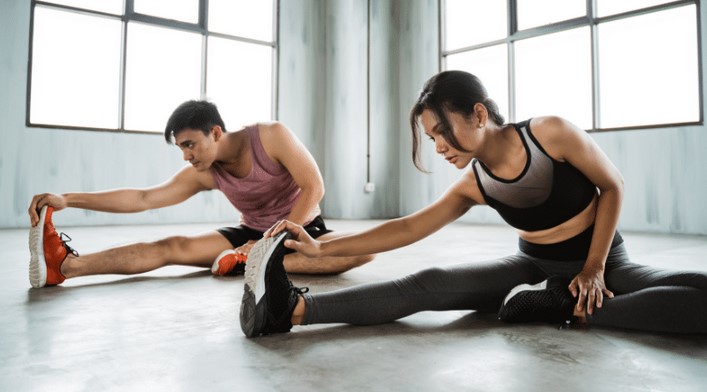
In recent years, medical tourism has become increasingly popular as more individuals seek affordable surgeries abroad. The rising costs of healthcare in many developed countries, combined with advancements in global medical standards, have made overseas surgeries an appealing option for those looking to save on medical expenses. Affordable surgeries abroad not only offer financial relief but also provide access to high-quality treatments in countries known for their advanced medical technologies and skilled professionals. In this article, we will guide you through the process of health travel, highlighting the benefits, popular destinations, and key considerations when considering affordable surgeries abroad.
Why Choose Affordable Surgeries Abroad?
The decision to travel abroad for surgery can be driven by various factors, with cost being one of the most significant. In countries like the United States, the United Kingdom, and Canada, medical procedures, particularly elective surgeries, can cost thousands of dollars. For example, a hip replacement in the U.S. can cost over $40,000, while the same procedure in countries such as India, Mexico, or Thailand can be done for a fraction of the price, sometimes saving patients up to 70-80% of their treatment costs.
However, cost savings are not the only reason to consider affordable surgeries abroad. Many countries that offer affordable surgeries also have medical facilities that meet international standards and employ highly trained doctors and surgeons. These countries often attract patients from around the world due to their reputation for excellence in medical care.
1. High-Quality Healthcare at Lower Prices
Medical tourism destinations such as India, Thailand, Turkey, and South Korea offer world-class healthcare services at a fraction of the cost found in Western countries. Many hospitals in these countries are accredited by international organizations like the Joint Commission International (JCI), ensuring that their medical facilities meet stringent global standards. Moreover, some countries specialize in specific procedures, such as dental work in Mexico or cosmetic surgery in South Korea, attracting patients from around the globe.
2. Shorter Wait Times
In countries with long waitlists for non-emergency surgeries, such as Canada and the U.K., affordable surgeries abroad can offer a quicker solution. Many medical tourists opt for health travel because they can bypass lengthy waiting periods and receive timely treatment. Countries that are popular for medical tourism tend to have streamlined processes and efficient systems, allowing patients to schedule surgeries promptly.
3. Combined with Travel and Recovery
Another appeal of medical tourism is the opportunity to combine surgery with travel. Many patients take the opportunity to explore the cultural and natural attractions of the destination they choose for their surgery. After the procedure, patients can also enjoy a recovery period in a relaxing, exotic location, making the experience more pleasant and memorable.
Popular Destinations for Affordable Surgeries Abroad
Certain countries have earned a reputation for offering affordable surgeries abroad, providing high-quality care, and attracting patients seeking cost-effective treatment options. Below are some of the most popular destinations for medical tourism.
1. India
India is one of the most sought-after destinations for affordable surgeries abroad. With a booming medical tourism industry, the country has become a global hub for a wide range of medical treatments, from cardiac surgery to cosmetic procedures. Many hospitals in India are equipped with state-of-the-art technology and staffed by internationally trained doctors.
- Key Surgeries: Heart surgery, hip and knee replacements, bariatric surgery, dental procedures, and cosmetic surgeries.
- Cost Savings: On average, medical procedures in India cost 60-80% less than in Western countries.
India also offers patients the opportunity to combine their surgery with a visit to the country’s many historical sites, making it a great destination for those looking for both medical care and travel experiences.
2. Mexico
Mexico is a popular destination for North Americans seeking affordable medical care, particularly those living in the U.S. and Canada. With its proximity to the U.S., many patients opt for Mexico to receive high-quality care at a fraction of the cost. Mexican hospitals and clinics are often JCI-accredited, ensuring that international standards of care are met.
- Key Surgeries: Dental implants, bariatric surgery, cosmetic surgery, and orthopedics.
- Cost Savings: Procedures in Mexico are typically 50-70% less expensive than in the U.S.
The ease of access, combined with cost-effective treatments, has made Mexico a top destination for health travelers.
3. Thailand
Thailand is known for its vibrant culture and beautiful landscapes, but it is also famous for its exceptional healthcare system. With its internationally recognized hospitals, highly skilled doctors, and cost-effective treatments, Thailand has become a leading destination for medical tourism in Asia. Many patients travel to Thailand for both surgery and recovery, as the country offers world-class resorts and wellness centers to facilitate post-operative care.
- Key Surgeries: Cosmetic surgery, dental procedures, IVF treatments, and orthopedic surgery.
- Cost Savings: The cost of treatments in Thailand is generally 60-70% lower than in Western countries.
Thailand’s combination of quality medical care, affordable prices, and scenic vacation opportunities make it a favorite among medical tourists.
4. Turkey
Turkey has emerged as a strong contender in the field of medical tourism, offering both affordable surgeries and a rich cultural experience. With numerous hospitals meeting international standards and a high rate of doctor specialization, Turkey attracts patients from Europe, the Middle East, and beyond. Istanbul, in particular, has become a hotspot for those seeking cosmetic surgery and dental work.
- Key Surgeries: Hair transplants, cosmetic surgery, dental implants, and weight-loss surgeries.
- Cost Savings: Treatments in Turkey can cost 50-70% less than those in the U.K. or the U.S.
Turkey’s affordability, alongside its historical attractions and beautiful landscapes, make it an appealing choice for health travelers.
Things to Consider Before Choosing Affordable Surgeries Abroad
While the benefits of affordable surgeries abroad are clear, it is important to approach the decision with careful planning and consideration. Here are some factors to keep in mind before committing to a medical procedure overseas.
1. Research and Accreditation
Ensure that the hospital or clinic you are considering is accredited by an internationally recognized body, such as the Joint Commission International (JCI). This will help ensure that the facility meets the high standards required for patient care and safety. Research the specific surgeon’s qualifications and experience, and ask for patient reviews and testimonials.
2. Medical Tourism Packages
Many countries offering affordable surgeries abroad also offer comprehensive medical tourism packages, which include flights, accommodation, transportation, and post-surgery care. These packages can help simplify the process and reduce the stress of organizing all the logistics.
3. Travel Insurance
When traveling for surgery, ensure that you have the right insurance coverage. Many travel insurance plans offer medical coverage for overseas treatment, but it is important to verify the specifics with your insurance provider. Some hospitals may even offer insurance plans for medical tourists, so be sure to inquire about these options before making your final decision.
4. Post-Operative Care
After surgery, recovery is crucial. Make sure you have a plan for post-operative care, both during your stay and after you return home. Some countries offer packages that include follow-up appointments and remote consultations to ensure your recovery goes smoothly.
Affordable surgeries abroad provide a viable option for those seeking high-quality medical treatment at a fraction of the cost they would pay in their home country. By considering popular destinations such as India, Mexico, Thailand, and Turkey, and taking the necessary steps to research and plan your health travel experience, you can receive top-notch care while enjoying the benefits of travel. As medical tourism continues to grow, more patients are finding that affordable surgeries abroad offer not only financial savings but also access to world-class healthcare and the opportunity to experience new cultures. If you’re considering health travel, it’s essential to do thorough research, understand your options, and plan accordingly to ensure a safe and successful experience.












